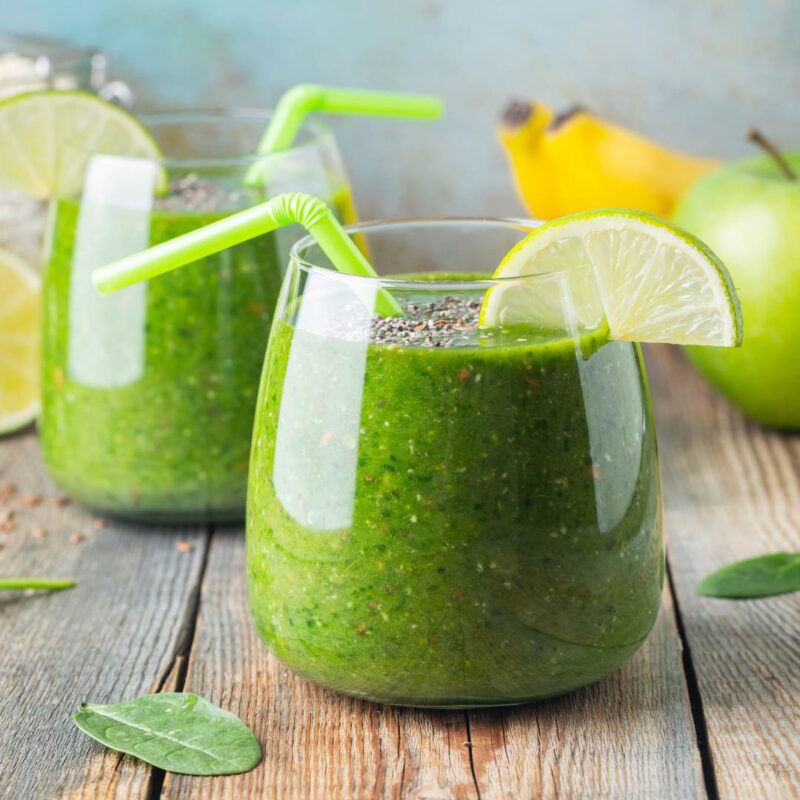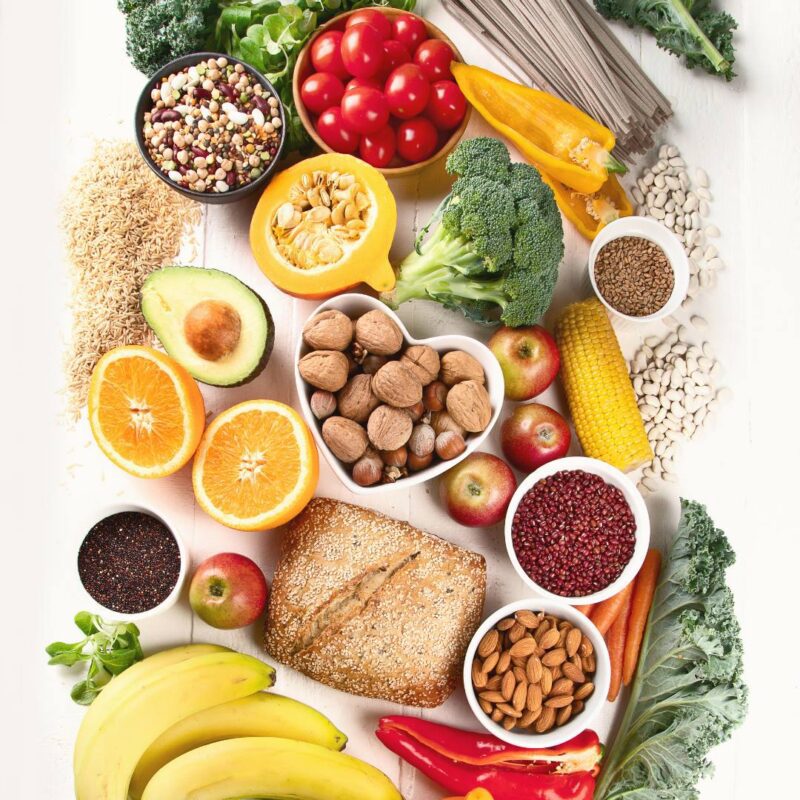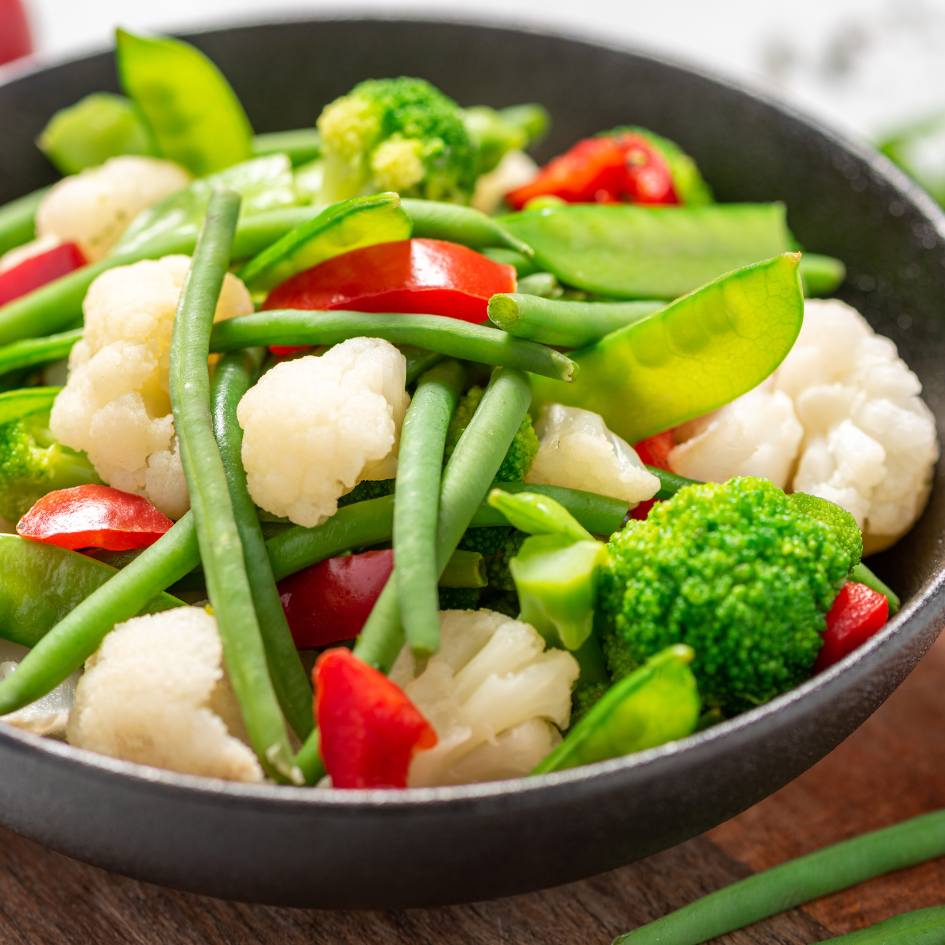
This post may contain affiliate links. Disclosure here.
There is no point selecting the best vegetables from the farmer’s market, paying extra on organic vegetables, or lovingly nurturing the vegetables in your garden if you fail to cook them properly and end up losing most of the nutritional value. It is important to know how to cook vegetables without losing nutrients, so you can access all the vitamins, minerals, antioxidants, and fibre that vegetables offer in the many delicious and versatile ways to prepare and eat them.
No matter the cooking method of dry or moist heat, vegetables will lose some of their nutrients. They will especially lose water soluble vitamins, such as Vitamins B and C, when cooked in water. However, some vegetables’ nutrients will become more bioavalble when cooked. Cooking breaks down the cell walls, making the nutrients more available, so your body can absorb them easier. Examples of these vegetables are from the carotenoid family, such as lycopene (found in tomatoes and red peppers) and beta-carotene(found in carrots, spinach and kale).
Therefore, it is important to get an assortment of raw and cooked vegetables into your daily diet and to make sure your vegetable dishes are tasty and appetizing, so you actually want to eat them no matter the cooking method.
The objectives when cooking vegetables are to maintain colour, flavour, and nutrition while achieving the desired texture. If the vegetables are soggy, overcooked, and discoloured, no one will want to eat them, so the nutritional value is redundant. Learn how to cook vegetables without losing nutrients, but also keep the dishes delicious and appetizing.
Steaming
Steaming is a great way to cook vegetables as it maintains most of the nutrients and the vegetables’ vibrant colour. The water soluble vitamins, flavours, and colours do not leech into the water since the vegetables are not submerged. Steaming is also low cal because little to no fat is required to cook the food or to keep it moist.
Only the freshest quality vegetables should be used for steaming, because this method does not add flavour; rather, it brings out the flavour existing in the vegetable. Most of the flavour will come post-cooking with the addition of ingredients that will give the dish character and appeal.

When steaming, it is important that the vegetables are held above the water so steam can rise and penetrate the vegetables. The vegetables should not touch the water, as it is the hot vapour that does the cooking.
Use a proper steaming pot to steam vegetables or set the vegetables above the water in a perforated container, rack, or collapsable steamer basket and ensure you use a tight fitting lid so the steam cannot escape. Multi layered pots help steam and heat a variety of foods at once, making it easy to prepare a quick and healthy meal.
Try this steamed asparagus recipe flavoured simply with butter, lemon, and sea salt.
Refer to this Steam Chart for times on steaming various vegetables so they stay bright and colourful with a firm texture.
Boiling
Although steaming is a healthier cooking method for vegetables, there may be times when you want to cook them by boiling. It is important to note that water soluble vitamins, such as Vitamins B and C, leech from the vegetables into the water when cooked in water. After boiling vegetables like carrots or broccoli, you can see the vitamins have leached into the water by the water’s colour. So aim to cook the vegetables quickly when boiling to lose less of the nutrients.
The most important thing when boiling vegetables is to boil them correctly, so they are appetizing and maintain the most nutrients. You want them bright in colour and firm in texture. Boiling even a minute or two too long can cause vegetables to turn off colour and become mushy.
If you choose to boil your vegetables, keep the liquid for soups or stews instead of throwing it down the drain. You can freeze the water to use later when you plan on making your soup.
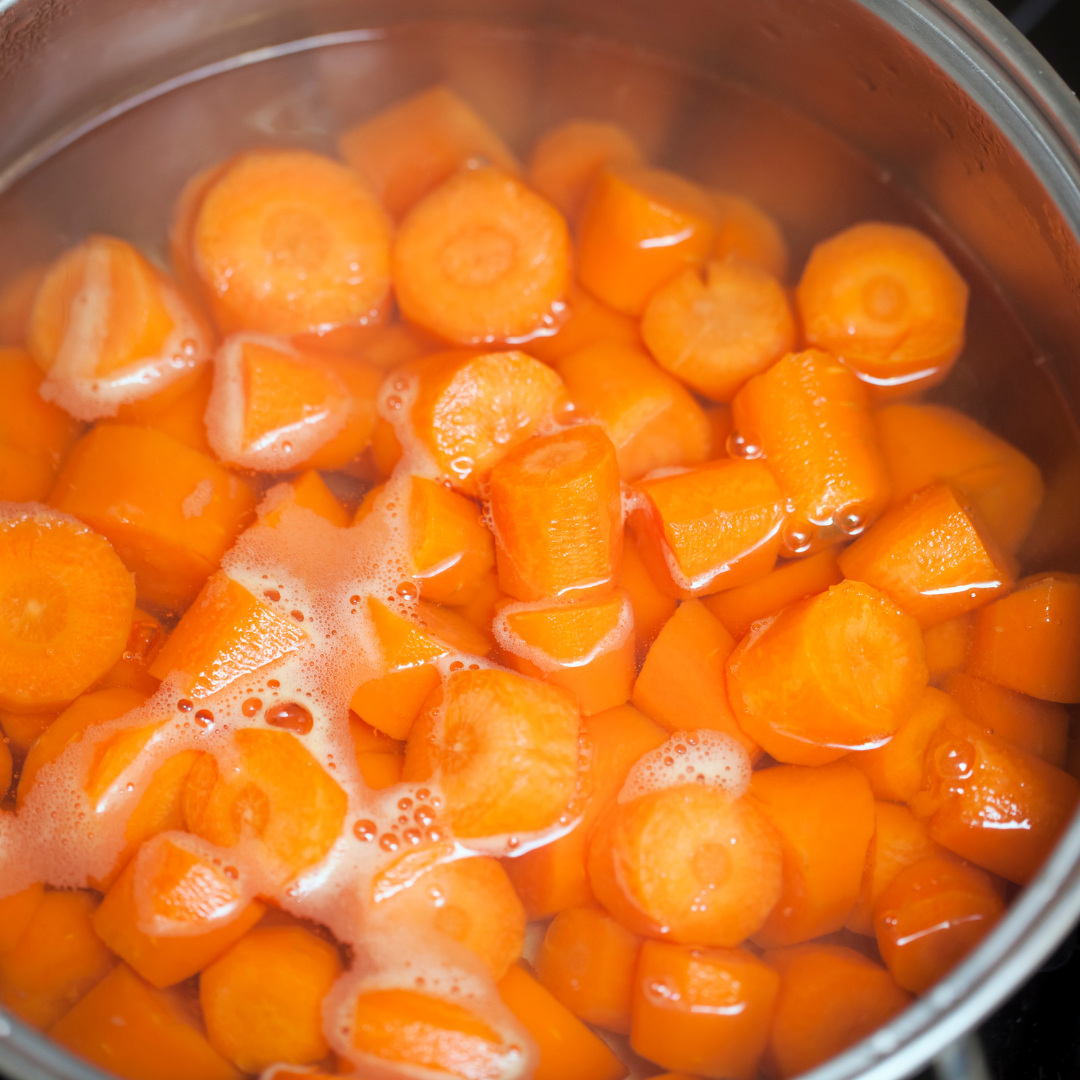
Boiling Tips
- Bring cold water up to a boil then season the pot.
- Add 1 tsp salt per 1 litre water. The salt helps to properly season the vegetables and enhances natural flavours. It also speeds up the boiling time, so vegetables are not in the water as long.
- Add 1 tbsp of olive oil to add flavour but also to coat and protect and add shine to the vegetables once drained.
- Ensure you are boiling the vegetables correctly for their pigments, some vegetables may benefit from adding an acid like vinegar to maintain colour.
- Cut vegetables into uniform pieces so they cook at the same rate.
- Because of the leeching, ensure you use the drained water after for soups and stews.
Phytonutrients
Phytonutrients are antioxidant substances found in plants and are believed to be anti-inflammatory and help prevent various diseases in humans. Phytonutrients are often concentrated in the skin of vegetable, so you may want to leave the skin on many vegetables that you normally peel. Instead just clean the vegetable well and cut off dark spots.
Save this Pin for future reference when cooking your vegetables.
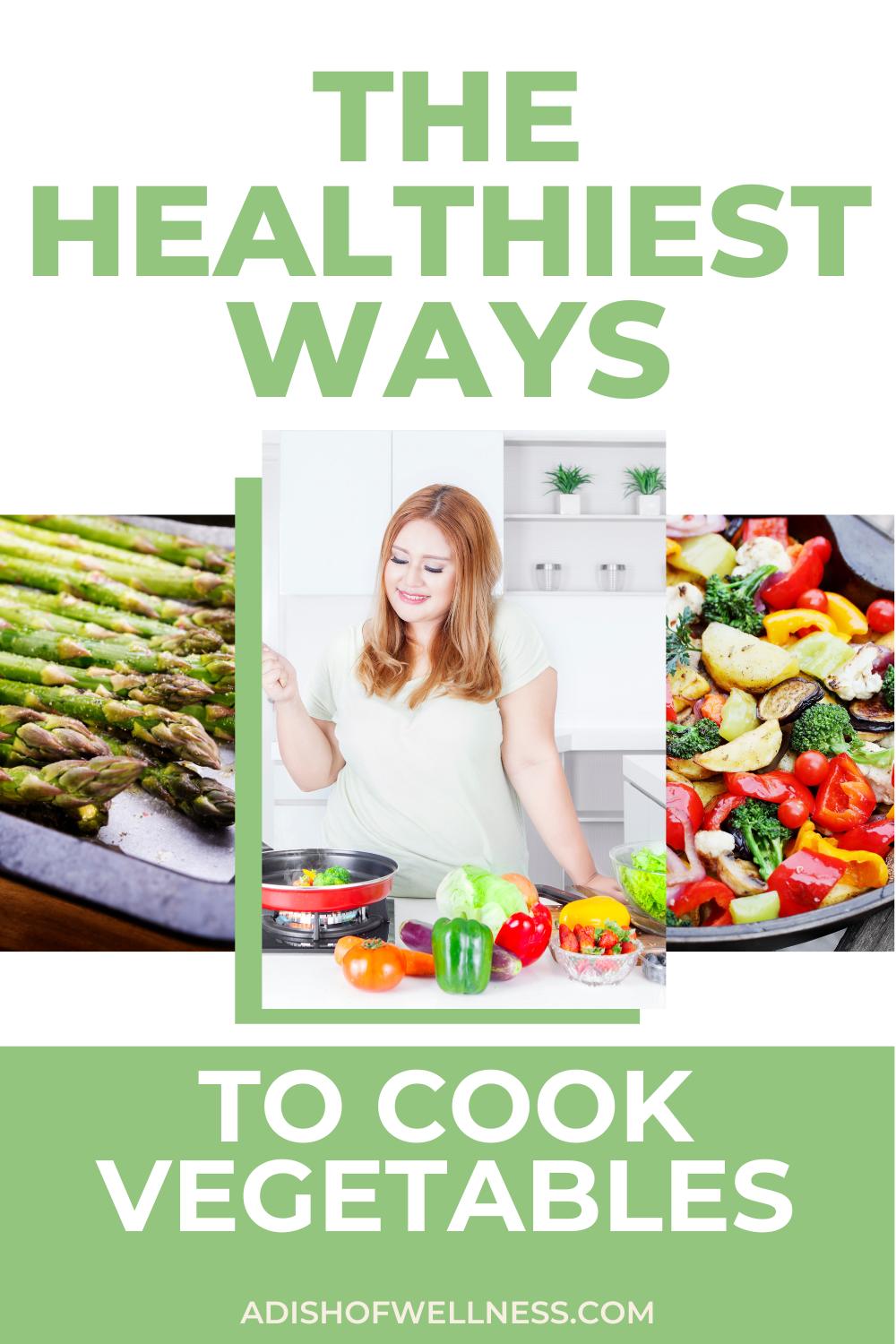
Phytonutrients give vegetables their rich and colourful pigments, making them bright white, or vibrant red, purple, orange, and green. These pigments help make vegetables appetizing, so care should be used to cook these phytonutrients the correct way.
Chlorophyll
Bright green vegetables, such as spinach, asparagus and broccoli contain chlorophyll. Chlorophyll is very sensitive to heat and acids. These vegetables will turn vibrant and bright when thrown into boiling water for a short amount of time, then they will experience a major colour loss and look dull and grey or brown.
These vegetables will also turn from bright green to dull green if cooked with an acid, such as a lemon or vinegar, so one should refrain from adding an acid until the serving stage and then serve immediately.
It is also important not to boil green vegetables with a lid. The natural occurring acids in the vegetables will concentrate on the lid and drop back into the pot, causing the discolouration to occur.
Flavonoids
Red vegetables, such as red cabbage, beats, and red onions and white vegetables, such as cauliflower and parsnips require an acid to preserve the vibrant colours. Add 1 to 2 tbsp of an acid, such as vinegar or lemon juice per one litre of water. An example is adding red wine vinegar to simmering beets to maintain the vibrant and beautiful red colour. Conversely, the acid will keep the white vegetables bright. These vegetables should be boiled with a lid to keep the acids in the water making the colours vibrant.
Carotine
Orange and yellow vegetables, such as carrot, sweet potatoes, and squash contain carotine in their skins. Carotine is very stable and can tolerate any cooking method well. These vegetables can be cooked with or without an acid and with or without a lid
Roasting and Grilling
Roasting is a popular and healthy dry heat cooking method that keeps most of the nutrients in the vegetables and is relatively low cal, depending on the amount of oils drizzled on top. Some fat is necessary when roasting to bring out the natural sugars of the vegetables and the caramelized texture. The oil also acts as a protective barrier for the moisture that is evaporating, and makes the vegetables look and taste more appetizing.
Ensure the vegetables are cut in a uniform size and shape so they cook evenly. Adding a bit of olive oil and sea salt and pepper brings out the natural flavours without adding a lot of calories.
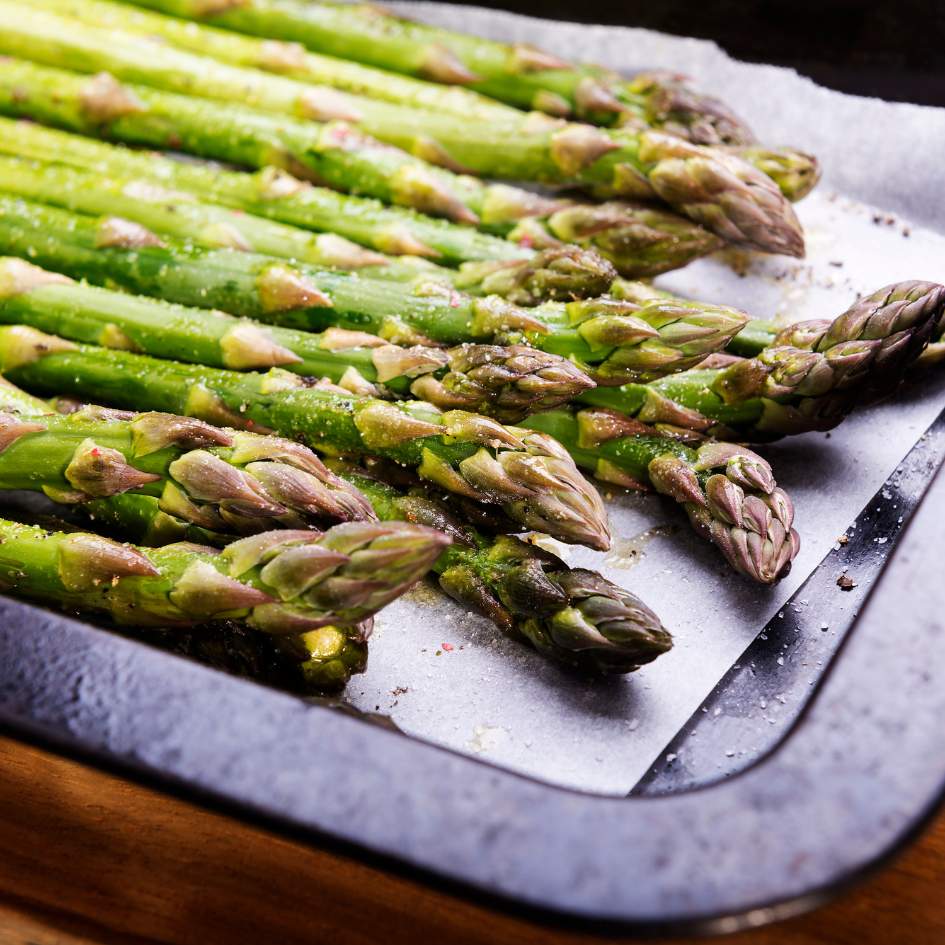
Sautéing and Stir-Frying
Sautéing and stir-frying can be healthy ways to cook the vegetables if done properly. The vegetables should be cooked in a small amount of fat for a short duration. It is important that the oil used to sauté or stir-fry the vegetables has a high smoke point. If you see smoke when cooking that usually means your oil is breaking down. When oil breaks down, it can release chemicals that give food an undesirable burnt or bitter flavour, as well as free radicals that can harm the body.
Avocado oil and coconut oil have high smoke points and are great oils to use when sautéing or stir-frying. Oils with a low smoke point should not be used to cook, and should only be used to drizzle after on cooked vegetables or salads. Refer to this chart for the temperatures and smoke points of various oils.
Adding a Fat
Some nutrients, like vitamins A, D, and K are fat soluble and can only pass from our intestine into our blood stream by a fat carrying them across. Therefore, adding olive oil or butter can actually help make these nutrients more bioavailable.
You can add olive oil in the cooking method or some after before serving along with fresh herbs and spices.
Adding a Citrus
Vegetables such as spinach, broccoli, and kale are non-heme iron sources and non-heme iron is better absorbed by the body with Vitamin C. So adding a food rich in Vitamin C to a non-heme iron meal can boost the nutritional value.
Bell peppers, sweet potatoes, tomatoes, oranges, and strawberries are excellent sources of Vitamin C and can easily be added into any meal with non-heme iron to make it more bioavable, keeping in mind the appropriate cooking methods for those vegetables. Some studies show that combining non-heme iron with Vitamin C increases the solubility in the small intestine up to 300%.
You can add some citrus to the cooking method; however as noted earlier, an acid added to green vegetables while boiling damages the pigment. So cooking with a lemon would be good for tomatoes, potatoes, and mushrooms.
A splash of lemon, lime, orange, or grapefruit juice is best added to cooked green vegetables prior to serving.

Conclusion
Vegetables can be delicious in many forms, raw or cooked, steamed or roasted. However, to get the most nutrients out of the vegetable, it is important to know how to cook vegetables properly without losing nutrients. It is also important to know how to cook vegetables so they are appetizing and have beautiful colours, textures, and flavours.ofwellness.com/how-to-cook-vegetables-without-losing-nutrients.


